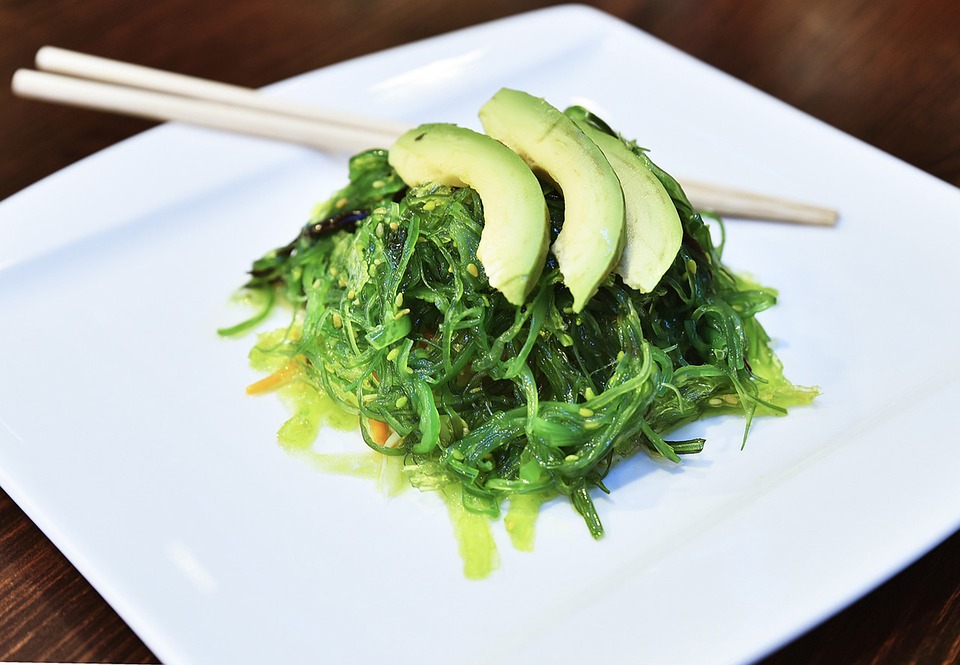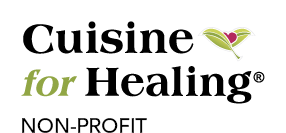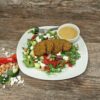
Seaweed in itself doesn’t sound very appealing but mention sushi and everyone is onboard! Well- everyone but me that is. I’m unapologetically not a fan of sushi, but I am a fan of seaweed.
Seaweed has been used all over the world for thousands of years and is a type of algae. Algae came to existence about three and a half billion years ago and is in 75% of the air we breath. When you think of seaweed in North America, you usually think about people from the Far East. Well, people from Japan have used seaweed since the beginning of time. Records show that for over 2000 years seaweed has been used as a supportive food in the Japanese diet. It is reported that at least six types of seaweeds were used in 800 A.D in everyday cooking in Japan. In 794, Japanese people used seaweed to make nori, which is a dried sheet of seaweed, which we see in sushi.
In Europe, Mediterranean seaweeds were used as medicine in Greek and Roman times. Greeks even used seaweed to feed animals as early as 100 BC. For thousands of years and in many cultures, seaweed has been used for food and fertilizer. In Ireland, people started collecting algae in 1200 AD. Farmers have used seaweed for hundreds of years as mulch for soil, and even today there is a large seaweed industry in both Scotland and Ireland. In Ireland, Palmaria, a red algae is, known under a variety of Gaelic and English names: duileasc, Creathnach, dulse and dillisk, expressing clearly the long usage and perhaps also the great variation in habit and habitat of this species. There are very early records of the use of Palmaria not only in Ireland but also Iceland. One of the oldest recorded writings in Iceland, dating back to 961 BC, included detailed regulations about coastal property rights to be respected in the collection of sea vegetables.
Seaweed has been a significant source of nutrition for many countries for centuries, but why should we consume this wonder of the sea? Here is what healthline has to say:
Kelp is one of the best sources of iodine. Just one teaspoon (3.5 grams) of dried kelp could contain 59 times the RDI (8). Seaweed also contains an amino acid called tyrosine, which is used alongside iodine to make two key hormones that help the thyroid gland do its job properly (9). Each type of seaweed has a unique set of nutrients.
Sprinkling some dried seaweed on your food not only adds taste, texture and flavor to your meal, but it’s an easy way to boost your intake of vitamins and minerals. Seaweed also contains small amounts of vitamins A, C, E and K, along with folate, zinc, sodium, calcium and magnesium (10). The protein present in some seaweeds, such as spirulina and chlorella, contain all of the essential amino acids. This means seaweed can help ensure you get the full range of amino acids (10,11, 12). Seaweed can also be a good source of omega-3 fats and vitamin B12 (10, 13, 14). In fact, it appears that dried green and purple seaweed contain substantial amounts of vitamin B12. One study found 2.4 mcg or 100% of the RDI of vitamin B12 in only 4 grams of nori seaweed (14, 15).
Antioxidants can make unstable substances in your body called free radicals less reactive (19, 20). This makes them less likely to damage your cells. Furthermore, excess free radical production is considered to be an underlying cause of several diseases, such as heart disease and diabetes (21). In addition to containing the antioxidant vitamins A, C and E, seaweed boasts a wide variety of beneficial plant compounds, including flavonoids and carotenoids. These have been shown to protect your body’s cells from free radical damage (21, 22). A lot of research has focused on one particular carotenoid called fucoxanthin. It’s the main carotenoid found in brown algae, such as wakame, and it has 13.5 times the antioxidant capacity as vitamin E (21). Fucoxanthin has been shown to protect cell membranes better than vitamin A (23).
Last, according to NaturalHealth365, a study was done in Malaysia using mice with breast cancer. In this study the mice who were given a seaweed extract called guso (Eucheuma cottonil L.) showed a 91% reduction in tumor size after 4 weeks whereas Tamoxifen (a common chemotherapy drug given to prevent breast cancer) was left far behind in terms of results. You can see this study at researchgate.com.
Moral of the story? Food can heal if it is straight from Mother Natures Medicine Cabinet!
Happy Healthy Eating! Dana
NaturalHealth365.com
https://www.healthline.com/nutrition/benefits-of-seaweed#section3
naturalknowledge247.com/seaweed-a-brief-history/









